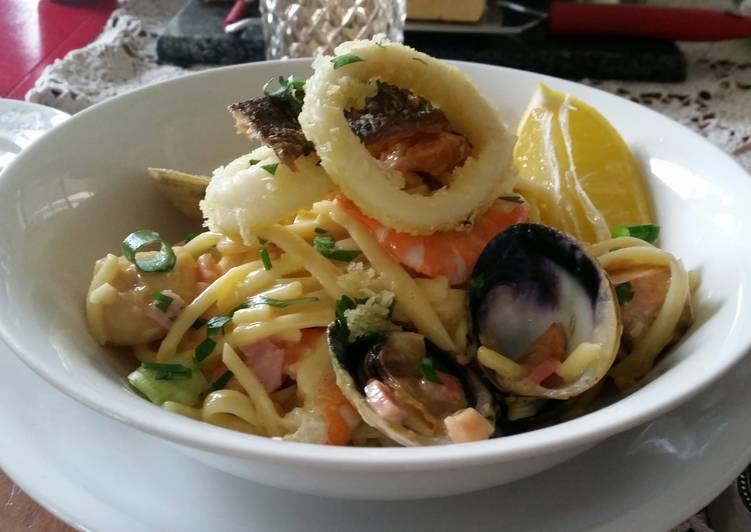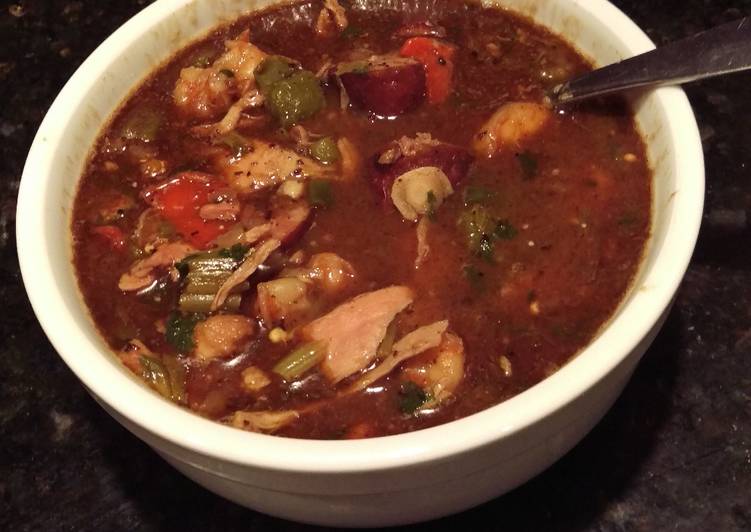
Hey everyone, it’s Brad, welcome to my recipe page. Today, I will show you a way to make a special dish, kue lapis bunga (flower layer cake). One of my favorites food recipes. For mine, I am going to make it a little bit tasty. This is gonna smell and look delicious.
Kue Lapis Bunga (Flower Layer Cake) is one of the most favored of recent trending meals in the world. It is enjoyed by millions daily. It’s simple, it’s fast, it tastes delicious. They are nice and they look fantastic. Kue Lapis Bunga (Flower Layer Cake) is something which I’ve loved my entire life.
Great recipe for Kue Lapis Bunga (Flower Layer Cake). And obviously it's pretty 😍😍😍 #heirloom If you like my recipes, please follow my Instagram @jenscookingdiary @jenscookdineandtravel Kueh Lapis, or Steamed Layer Cake / Jiu Ceng Gao, never fails to put a smile on my face. After all, who can forget having these as a child, peeling off the layers individually and slowly savouring each soft, springy layer of coconut-y goodness! Kuih Lapis - Steamed Layer Cake Snack Steamed Kuih Lapis is a popular snack in Malaysia and Singapore and it literally means layer cake in Malay.
To begin with this recipe, we must prepare a few components. You can have kue lapis bunga (flower layer cake) using 11 ingredients and 10 steps. Here is how you can achieve it.
The ingredients needed to make Kue Lapis Bunga (Flower Layer Cake):
- Prepare Liquid ingredients:
- Take 500 ml coconut milk
- Get 500 ml water
- Take 300 gr granulated sugar
- Make ready 2 pandan leaves
- Take Dry ingredients: (mix together in a bowl)
- Take 250 gr sago flour
- Get 125 gr all-purpose flour
- Get 1/2 tsp salt
- Take Additional ingredient :
- Take red food coloring
Mix until well combined and sieve through. Bakeware Used Kue lapis is an Indonesian kue, or a traditional snack of steamed colourful layered soft rice flour pudding. This steamed layered sticky rice cake or pudding is quite popular in Indonesia, and also can be found in the Netherlands through their colonial links. Kue lapis is also very popular in neighbouring Malaysia, Singapore, and Brunei where it is called.
Instructions to make Kue Lapis Bunga (Flower Layer Cake):
- Boil all liquid ingredients only until the sugar dissolves. Stir continuously. Remove from the heat. Set aside until it’s warm.
- Gradually pour the warm liquid into a bowl filled with dry ingredients, stirring evenly using a whisk. Strain.
- Divide the batter into two equal parts. Add red food coloring into 1 part. Mix well.
- This is the most important step to do: Cover the lid of the steamer with a kitchen towel to prevent condensation from the lid from falling on to the steamed cake. Fill the steamer with water (below the steaming plate). Cover the steamer with the lid and slowly bring water to boil.
- Prepare the flower mold. Lightly brush the inside of the mold with cooking oil.
- Pour 1 tsp of white batter into the flower molds. Steam for 2 minutes. Remove from the heat.
- Pour 3 tsp of red batter into the flower molds. Steam for 3 minutes. Remove from the heat.
- Pour 3 tsp of white batter into the flower molds. Steam for 3 minutes. Remove from the heat.
- Lastly, pour 3 tsp of red batter into the flower molds. Steam for 15 minutes. Remove from the heat. Let it cool.
- Remove flower layer cake from the molds. Serve it with a cup of hot tea or coffee. Yum 😋
This steamed layered sticky rice cake or pudding is quite popular in Indonesia, and also can be found in the Netherlands through their colonial links. Kue lapis is also very popular in neighbouring Malaysia, Singapore, and Brunei where it is called. And it is a signature treat in Indo-Dutch cuisine. Kue Lapis Sagu Ombre (Ombre Steamed Sago Layered Cake) #mycookbook 'Lapis' in Indonesian means layered. This is one of the traditional cake which can be found not only in Indonesia but also in Malaysia 🇲🇾, Singapore 🇸🇬, and Brunei 🇧🇳 where it is called kuih lapis.
So that’s going to wrap it up with this exceptional food kue lapis bunga (flower layer cake) recipe. Thanks so much for your time. I’m confident you will make this at home. There’s gonna be more interesting food in home recipes coming up. Don’t forget to bookmark this page on your browser, and share it to your family, friends and colleague. Thanks again for reading. Go on get cooking!

